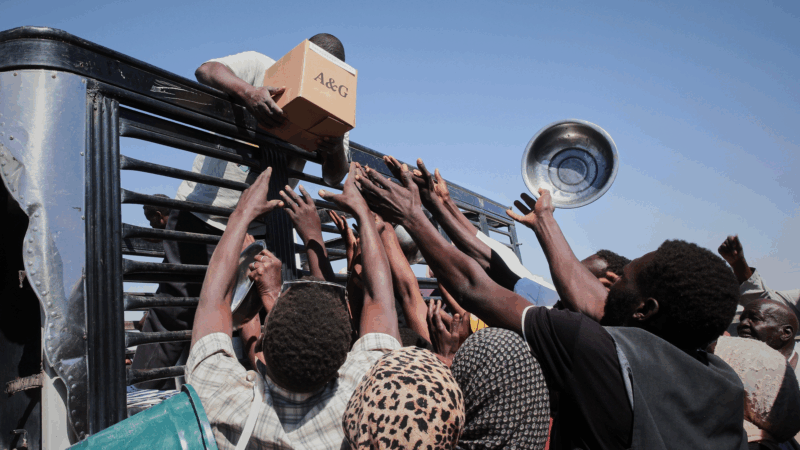Report: State Improved in Several Child Health Indicators but Still Struggles With Poverty, Racial Disparity
By Daniel Gaddy
Updated — Alabama has made significant progress in infant mortality rates, teen pregnancies and child safety, but poverty and a racial disparity in indicators of wellbeing remain a problem for children in the state, according to a report released today.
The report, called the Alabama Kids Count Data Book, explores 70 key indicators across four issue areas: health, safety, education and economic security. The Montgomery-based nonprofit group VOICES for Alabama’s Children has produced the data book every year since 1994.
Angela Thomas, communications manager for Voices, said that while the state’s child population has decreased, it has also become more ethnically diverse. And that trend follows national demographics.
Despite the diversity, African American children track below their white peers in every indicator covered in the data book, she said.
“Alabamians of color are overrepresented in measures of disadvantage,” she said.
That gap is evident in the breakdown of school suspensions by race. The report found that black students were almost three times as likely to be suspended as white students. The report notes that the same trend is found in national data.
Thomas said one cause for the disparity could relate to the high proportion of African American children living in poverty.
This year’s data book shows 43% of black children living in poverty compared to 18% of white children. The rate for Hispanic children was also 43%.
Overall, Alabama remains on an upward trend in terms of child poverty, moving from 21.5% in 2000 to 26% in this year’s data book. However, this rate is down by half a percentage point from last year’s report.
The report also showed that among those children living in poverty, half live in extreme poverty. That’s defined as a family of four making less than $13,000 a year.
“Living in poverty and being not secure in your home can really affect the rest of these indicators that we talk about,” Thomas said.
But it’s not all bad news.
According to the report, Alabama hit an all-time low infant mortality rate in 2017. That year there were 7.4 infant deaths per 1,000 live births, a decrease from 10 in 2007. Even more encouraging, Thomas said, the rate saw a decline across all races. However, she points out that Alabama still falls behind the national average on the metric.
Births to teens age 15 to 17 also decreased from 28.9 per 1,000 births in 2000 to 11.4 in 2017.
Working on the Problems
That drop isn’t by accident. Janice Smiley, perinatal health division director for the Alabama Department of Public Health, said the state has invested millions of dollars and established several programs in the past decade to reduce the statistic.
In 2009, Alabama started its Fetal and Infant Mortality Review Program. This project created multidisciplinary teams to review each infant death.
“From that we are able to identify factors that contribute to deaths in a particular region,” Smiley said.
The review teams then make recommendations for changes in their communities and Community Action Teams work to implement those recommendations.
Last year, Alabama leaders announced the Alabama Infant Mortality Reduction Plan, which has six state departments collaborating to reduce the infant mortality rate of Macon, Russell and Montgomery counties by 20% over the next five years.
The plan aims to accomplish that goal by strategies such as expanding women’s clinics and education campaigns that encourage parents to have infants sleep in their cribs and on their backs.
Smiley also mentioned a state program that has volunteers make home visits and offer infant caregivers help for things such as referrals for support services as well as screenings for childhood development, caregiver depression and domestic violence.
“All of those things play a major role in infant mortality,” she said.
Despite the progress, Alabama remains below the national average for infant mortality, which was 5.8 deaths per 1,000 births in 2017.
“We’ll have to stay on course to keep improving health and safety for our mom’s and babies in the state,” Smiley said.
According to the data book, Alabama also saw significant gains in the area of child safety. Since 2008, Alabama’s juvenile incarceration rate dropped by 6.6%, and the state saw a similar decrease in the number of juvenile violent crimes reported to the courts.
Asked what state leaders could do to help improve the quality of life for children in Alabama, Thomas said, “I think we have to realize that these changes aren’t going to come short term, but that a combination of legislation and policy changes can pay dividends over the years.”
Thomas mentioned the state’s expansion of pre-kindergarten programs as an example. Those students will likely show marked academic improvement many years from now, she said.
The state’s First Class Pre-K program expanded again this year and now covers more than 1,200 classes in the state. It has been named the highest-quality program in the country for several years in a row.
Something every Alabamian can do to help the state’s children is to complete the 2020 Census form, according to Thomas. An accurate count of the population not only affects government funding for programs that help children, but it provides accurate data so that reports like the data book can help guide policy changes.
Other Findings:
- While approximately 97% of Alabama’s children are now covered by some form of health insurance, the number of the state’s children without health insurance increased from 39,111 in 2016 to 41,459 in 2017.
- In 2017, there were 164 preventable deaths for teens age 15 to 19, which is an approximate 20% decrease from the previous year.
- Alabama saw a 60% decline in the number of licensed child care centers, from 4,269 in 2000 to 1,698 in 2019. But during that same time, licensed exempt centers rose 30% to 816.
Light from satellites will ruin majority of some space telescope images, study says
Astronomers have long been concerned about reflections from satellites showing up in images taken by telescopes and other scientific instruments.
Defense Department is reviewing boat strike video for possible release, Hegseth says
In a speech on Saturday, Defense Secretary Pete Hegseth defended the strikes, saying: "President Trump can and will take decisive military action as he sees fit to defend our nation's interests."
Bama, Miami in, Notre Dame out and Indiana No. 1 in College Football Playoff rankings
Nobody paying attention for the past 24 months would be surprised to see Indiana – yes, Indiana – leading the way into this year's College Football Playoff.
McLaren’s Lando Norris wins first F1 title at season-ending Abu Dhabi Grand Prix
Red Bull driver and defending champion Max Verstappen won the race with Norris placing third, which allowed Norris to finish two points ahead of Verstappen in the season-long standings.
A ban on feeding pigeons ruffles lots of feathers in Mumbai
The pigeon population has exploded — a result of people feeding the birds. For some it's a holy duty and a way to connect to nature. Critics point to health risks tied to exposure to pigeon droppings.
UN humanitarian chief: world needs to ‘wake up’ and help stop violence in Sudan
The UN's top humanitarian and emergency relief official has told NPR that the lack of attention from world leaders to the war in Sudan is the "billion dollar question".








